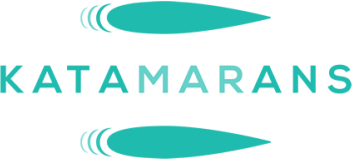Safehaven Marine
Safehaven Marine is an independent boatbuilder based in Youghal, County Cork, Ireland. The company has produced more than 170 vessels to around 30 countries, with more than 60 commercial pilot boats in daily service—an unusual footprint for a specialist yard of its size.

The firm launched in the late 1990s and took off in 2004–05, when Safehaven won the Port of Cork tender and evolved its proven Interceptor 42 hull into a purpose-built pilot boat. That design seeded a family that expanded rapidly (Interceptors 38/48/55/60) and drew repeat orders from ports across Europe and beyond.
Founders/Team
Safehaven was founded and is led by Frank Kowalski, a former commercial skipper who also serves as the in-house naval architect and chief test driver. Kowalski’s “designer-builder-skipper” role shapes the culture and products: he loves deep-V seakeeping, structural strength, and real-world testing of his boats in severe weather.
The yard employs a talented team of around 35 multi-disciplinary craftspeople (engineers, electricians, laminators, shipwrights) working in two Youghal facilities approved by Lloyd’s and BV.
Philosophy
Safehaven’s ethos can be summarised as: in-house design, strong builds, proven it at sea. The yard is famous for its storm trials at the entrance to Cork Harbour—timed to ebb tides and winter lows—where breaking seas can reach 8–10m. Many of these are covered on their YouTube channel.
Kowalski’s reasoning is as follows: components that never fail in calm water will break in surf and gale conditions; they prefer to find those weak points during trials, not in a customer’s first storm.
The company’s boats are specified for “all-weather” work to about Force 10 with 6–7m waves, and many are inherently self-righting due to low VCG and buoyant superstructures.
Standout Products / Best Builds
Interceptor Pilot Boats (38–60 ft)
These deep-V, twin-chine FRP monohulls have become a staple for exposed Atlantic ports; the Interceptor 48 alone accounts for more than 35 deliveries. Clients include Cork, Dublin, Liverpool, and major global operators (e.g., P&O Maritime, Svitzer, DP World).

Wildcat Catamarans
High-bow-buoyancy work cats used for windfarm support, crew transfer, and hydrographic survey—often with Safehaven’s own sonar-deployment systems.
Barracuda Interceptor
A low-RCS, (Radar Cross Section) high-speed “stealth” patrol craft developed after a multi-year R&D push for naval and law-enforcement roles.
XSV Series (Thunder Child I/II)
Patented wave-piercing demonstrators that have set multiple UIM (Union Internationale Motonautique) endurance/speed records, including the 2021 Ireland-to-Iceland North Atlantic run at an average 30 knots. These in-house projects serve as rolling testbeds for hull forms, drivetrains, and ergonomics.
The Voyager T-2000
Launched as a flagship private motor yacht, the Voyager T-2000 reimagines the expedition power-cat brief around speed and weather windowing.

This 21.4m (70-ft) semi-wave-piercing cat uses an integrated hydrofoil between the hulls and surface drives (France Hélices or Arneson) on twin MAN V12s (1,550–2,000 hp), delivering over 50 knots of max speed and an exceptional 1,000-nm range at 30–35 knots in its long-range spec.
Safehaven specs a moderate 6.2m beam for marina practicality and a bridge-deck cut-back to reduce slamming in steep head seas. Construction is heavy-duty for a yacht: vinylester E-glass cored topsides, solid laminate bottoms, extensive carbon reinforcement, 20mm forward glazing, and watertight aft door.
A 2025 “Mediterranean” option adds a flybridge roof, expanded outdoor lounging, and adaptable four-cabin layouts while retaining 50-knot performance. Reviewers have described Voyager as a “jaw-dropping, zero-compromise” super-cruiser.
What Sets Them Apart
Three traits distinguish Safehaven.
First, extreme-weather validation: few builders publish so much technical narrative and video of repeated surf-zone testing.
Second, vertical integration: design, composites, outfitting, and trials are all “under one roof,” enabling iterative improvements across builds.
Third, record-setting demonstrators: by funding and running their own high-speed programs (Thunder Child), they de-risk innovations before customers adopt them.
Competition
In its pilot-boat core market, Safehaven’s most visible rivals are Damen (Netherlands) with its composite Stan Pilot line (Sea Axe influence) and Metal Shark (USA) with its welded-aluminum Defiant-class pilots (38–64 ft). Both offer proven platforms and substantial industrial capacity.
In the expedition power-cat market, Voyager’s foil-assist, 50+ knot/long-range formula is unusual; most long-range cruisers emphasize lower-speed efficiency. This sets Safehaven apart, attracting buyers who want to exploit short weather windows at high average speeds.
The Future
Continued deliveries of large Interceptor pilots (notably the 18m Pilot 60) to blue-chip operators like DP World, plus a second Voyager build for a Middle East client give clues to the direction that this company is taking.
We can expect further refinement of foil-assist cats, surface-drive integrations, and “commercial-grade” yacht fit-outs aimed at fast passagemaking.
Summary
From a storm-battered corner of Ireland, Safehaven Marine has built a reputation that mixes high seamanship with modern composites and a test-to-failure mindset.
The Interceptor pilots and Wildcat work cats have earned the trust of ports and navies the hard way. Thunder Child validated bold hull ideas at speed; and the Voyager T-2000 translates that credibility into a private yacht that can cross oceans at 30–40 knots when the weather window opens—and ride out the rest.
